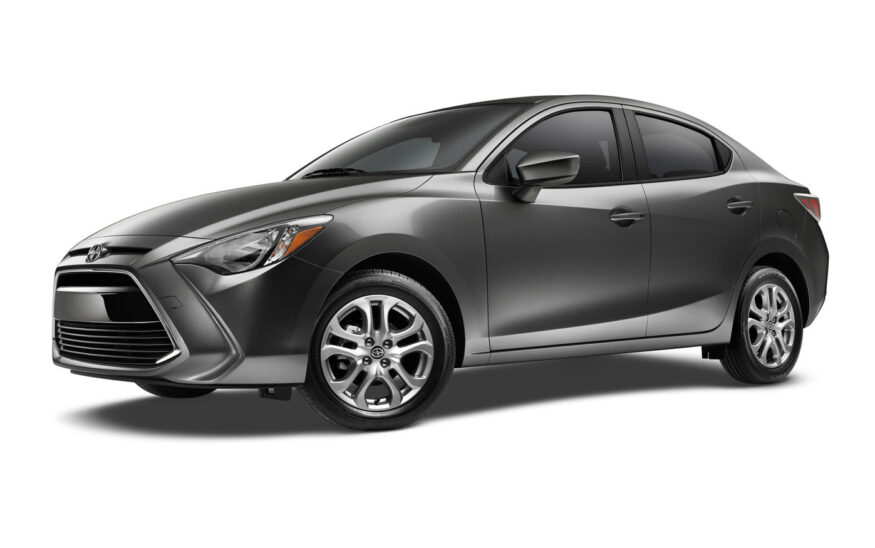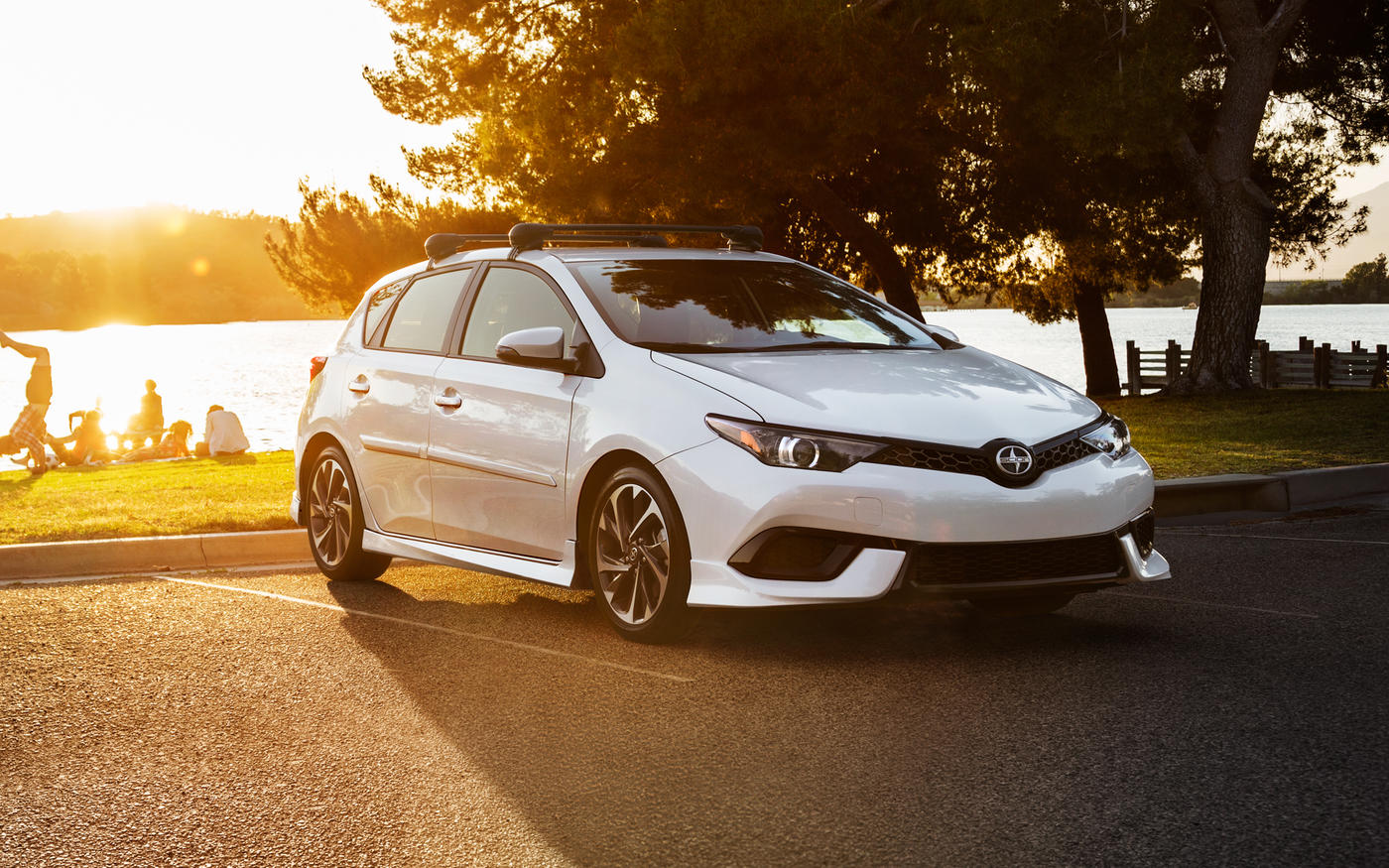Toyota scores a hit and a miss with its latest Scions
The automaker unveils its first new models in three years
Jeff Rundles //December 7, 2015//


Toyota scores a hit and a miss with its latest Scions
The automaker unveils its first new models in three years
Jeff Rundles //December 7, 2015//
Scion, the lower-priced Toyota line launched in 2002 and targeted toward Generation Y (those people, generally, who came of age around the year 2000), has always struck me as a kind of enigma. First, because its initial marketing was to be web-based – you know, they were going for guerrilla and viral marketing trends – at a time when the web was just really taking off. I thought it was kind of a gamble at the time. But sales of the line reached as high as 170,000 units by 2007 – a very impressive debut.
Then, I thought Scion was enigmatic in that when the recession hit, it was precisely the lower end of the market that took the biggest hit. Scion sales plummeted to just over 45,000 in 2010, which had to have been a tough decline from a manufacturing planning point of view. I thought for sure that Toyota would dump the line.
Now, with the first new models in three years, I find the enigma intact: While very nice vehicles, these two, the 2016 iM hatchback and the 2016 iA small sedan, don’t stand out as anything other than small Toyotas. I keep wondering: what’s the point?
It could be that there is no point. The car business has become wacky. I’m driving the iA, liking it very much, and I’m thinking the entire time it feel exactly like a Mazda2; I love the Mazda line, I very much liked the 2, but c’mon, Mazda and Toyota are direct Japanese competitors, right? Not so fast: I found a reference on the web to the fact that the Scion iA has “Mazda2 underpinnings,” and then I found a news article from late last year that noted that Toyota and Mazda reached an agreement to share certain things, like car development and even manufacturing. If that isn’t wacky, I don’t know what is. Turns out that the Scion iA is indeed made in a Mazda factory in Mexico, and that in other countries, like Canada, it is marketed as a Toyota Yaris. Go figure.
I couldn’t find out much about the iM, but who knows? Given what’s going on in the business, it could be a Buick or a Yugo.
 When I heard I was getting these two Scions back-to-back, I assumed they were essentially the same car, one rendered in a 5-door hatchback with a manual transmission (the “M” in iM), and one as a sedan with an automatic tranny (the “A” in iA). Nope. While they were quite similar from a size point of view – the iM has a wheelbase of 102.4 and the iA a wheelbase of 101.2 – they were actually quite different.
When I heard I was getting these two Scions back-to-back, I assumed they were essentially the same car, one rendered in a 5-door hatchback with a manual transmission (the “M” in iM), and one as a sedan with an automatic tranny (the “A” in iA). Nope. While they were quite similar from a size point of view – the iM has a wheelbase of 102.4 and the iA a wheelbase of 101.2 – they were actually quite different.
The iM, first up on my test drives, was indeed a manual transmission, which you don’t see much anymore, but it had a heftier feel of the two. It was a pretty Spartan vehicle, really – cloth seats, no sunroof, regular key starting, and a fairly low-key 7” touch screen to display all the stuff for the audio system and the hands-free phone – all standard, by the way.
 Nothing fancy here, except that cars these days, especially those targeted at a younger audience, need to have all of the modern hookups for smart phones and the like. The engine in this vehicle, a 1.8-liter four-banger with 137 hp, was a little underpowered, even with a manual tranny. I kept thinking that I would discover that it had more guts, but I didn’t. Pretty good on gas mileage, though, at 27 mpg city/36 highway. The shifting of the manual was easy-as-pie, and this car struck me as a very suitable run-around-town commuter car. It handled well, drove very smoothly, had a nice if smallish storage area underneath the rear hatch, and was quite comfortable. Even the back seats were relatively roomy. It seemed to be well-made.
Nothing fancy here, except that cars these days, especially those targeted at a younger audience, need to have all of the modern hookups for smart phones and the like. The engine in this vehicle, a 1.8-liter four-banger with 137 hp, was a little underpowered, even with a manual tranny. I kept thinking that I would discover that it had more guts, but I didn’t. Pretty good on gas mileage, though, at 27 mpg city/36 highway. The shifting of the manual was easy-as-pie, and this car struck me as a very suitable run-around-town commuter car. It handled well, drove very smoothly, had a nice if smallish storage area underneath the rear hatch, and was quite comfortable. Even the back seats were relatively roomy. It seemed to be well-made.
But I wasn’t wowed. The base price is $18,460, and they added on a couple hundred in floor mats, wheels locks and a rear bumper protector, and then with $795 in handling fees, the bottom line was $19,594. That’s a respectable price for a car of this type and quality, but there was nothing about it that would make it distinctive enough for me not to drive the competition – Honda, Mazda, Toyota, Kia, Hyundai, Ford, Chevy – and find something with a little more flair.
So I was anticipating I would feel the same way about the iA – maybe even less so in that, usually, small cars like this with an automatic transmission are more sluggish. Bu the iA surprised me. It has a smaller engine – a 1.5-liter four-banger with just 106 hp (rated at 33 mpg city and 42 mpg highway) – but it had more guts. The automatic transmission, a 6-speed with Sport mode, is smooth, and this car zipped around town and on the highway like it had twice as much hp. It was very fun to drive – as I said earlier, it reminded me of the Mazda2, which it is apparently, and I thought that perhaps Scion/Toyota should have Mazda make all of their cars.
What impressed me the most about this car was that it is kind of a mini luxury car – there’s a fancy LCD, 7” color touch screen display, and a very Lexus-like mouse-type control knob to control all of the functions. I don’t like these types of controls – too hi-tech for my tastes, and they make it so you have to take extra steps to accomplish tasks – but it gives the iA a very upscale feel. There’s keyless entry, push-button start, all of the techno hookups, a great audio system, and one of the easiest hands-free phone systems I have ever used.
 The more I drove the car, the more impressed I became. It was surprisingly zippy, took to the highway like a car twice as large and powerful, it handled beautifully, and it was beyond comfortable. The back seat was a little tight, so my passengers said, but adequate, but the front seats were roomy, and the cabin very quiet. It even had a nice-sized truck (two golf bags, no prob).
The more I drove the car, the more impressed I became. It was surprisingly zippy, took to the highway like a car twice as large and powerful, it handled beautifully, and it was beyond comfortable. The back seat was a little tight, so my passengers said, but adequate, but the front seats were roomy, and the cabin very quiet. It even had a nice-sized truck (two golf bags, no prob).
What got me was that in comparing the iM with the iA, it was no contest – the iA was the better car, from a power point of view, from a driving point of view, from a comfort point of view, everything. And the iA had more luxury-like appointments. But oddly, the base price on the iA is $16,800 and they added on nothing but the $770 destination charge, bringing the bottom line to $17,570. Two thousand dollars less than the iM – I guess you pay more for the appearance of a larger engine. And unlike the iM, I truly believe that with the iA test-driving the competition would only bring you back to the Scion iA.
If Toyota is going to fully revive the Scion brand, they took giant strides forward with the iA, and back pedaled with the iM. So a hit and a miss at a critical time. As I said, the automotive world is wacky.
RATINGS:
2016 SCION iM 5-DOOR HATCHBACK: TWO WHEELS (OUT OF FOUR)
2016 SCION IA SEDAN: FOUR WHEELS (OUT OF FOUR)
























